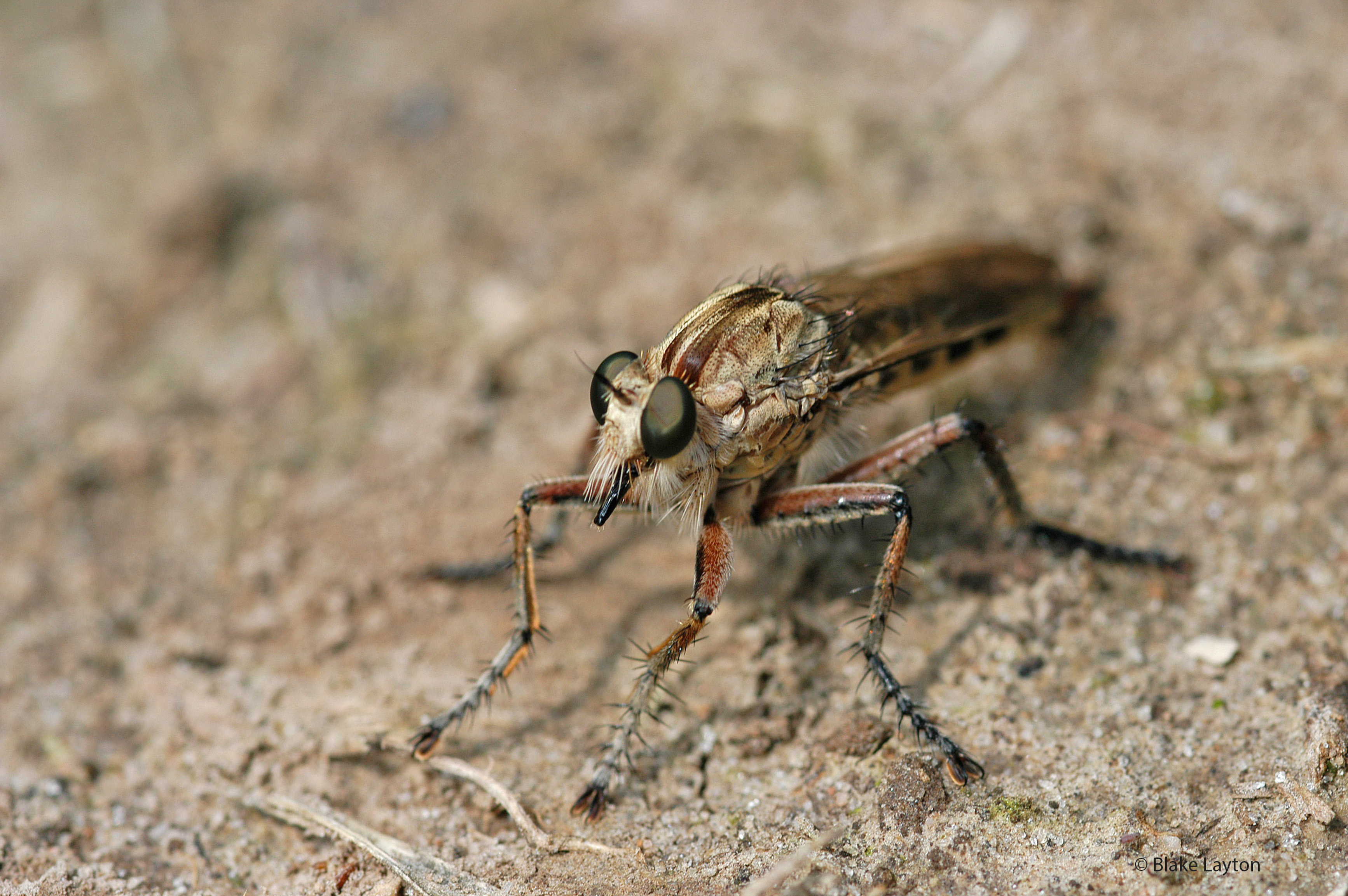Robber Fly Vol. 9, No. 21
Related News
June 29, 2015
June 17, 2015
June 4, 2015
Order: Diptera
Family: Asilidae
 I had subconsciously noticed the grasshopper that flew up in front of me as I walked down the turnrow, but it wasn’t until I heard a sharp thwack and saw the grasshopper tumble to the ground that I started paying attention. A robber fly had attacked the grasshopper in mid-air, knocked it to the ground, and was injecting it with paralyzing saliva. When I checked back about 15 minutes later, the robber fly was still there, sucking the now pre-digested fluid from its prey.
I had subconsciously noticed the grasshopper that flew up in front of me as I walked down the turnrow, but it wasn’t until I heard a sharp thwack and saw the grasshopper tumble to the ground that I started paying attention. A robber fly had attacked the grasshopper in mid-air, knocked it to the ground, and was injecting it with paralyzing saliva. When I checked back about 15 minutes later, the robber fly was still there, sucking the now pre-digested fluid from its prey.
Robber flies are raptors of the insect world. Also known as assassin flies or bee killers, these predatory flies feed on a wide range of insects, usually capturing their prey in flight and often taking prey as large as, or even a bit larger than, themselves. There are many species; some are less than ¼ inch long, while some are well over an inch. Some of the larger species are covered with dense black and yellow hairs and resemble bumble bees. These big robber flies are impressive, but they are not as common as the species featured here.
The fly in the photo is about an inch long and is common along field edges, open fields, gravel roads, and similar open sites—the kinds of places frequented by grasshoppers. They hunt by resting on a low perch a foot or so above the ground and waiting for a grasshopper or other suitable prey to fly too close.
As a kid, I sometimes caught grasshoppers and threw them in front of a perched robber fly. With a bit of practice and some luck, you can gauge your throw so the grasshopper takes flight at the right distance from the fly to trigger a predatory strike. One robber fly strike out of every three or four attempts is a pretty good success rate. It’s falconry with insects!
Robber flies have piercing-sucking mouthparts, which they use to inject their prey with a toxic saliva that paralyzes the prey and pre-digests and liquifies the contents so they can be sucked up. They can and will bite if mishandled, and the bite is about as painful as a bee sting. Although they feed on other insects, it is a bit of a stretch to consider robber flies beneficial insects. Most species are generalist predators that just do not have much effect on pest insect numbers, and many prey on bees or other non-pest insects. But they are fun to watch as they hunt.
Blake Layton, Extension Entomology Specialist, Mississippi State University Extension Service.
The information given here is for educational purposes only. Always read and follow current label directions. Specific commercial products are mentioned as examples only and reference to specific products or trade names is made with the understanding that no discrimination is intended to other products that may also be suitable and appropriately labeled.
Bug’s Eye View is now on Facebook. Join the Bug's Eye View Facebook group here.